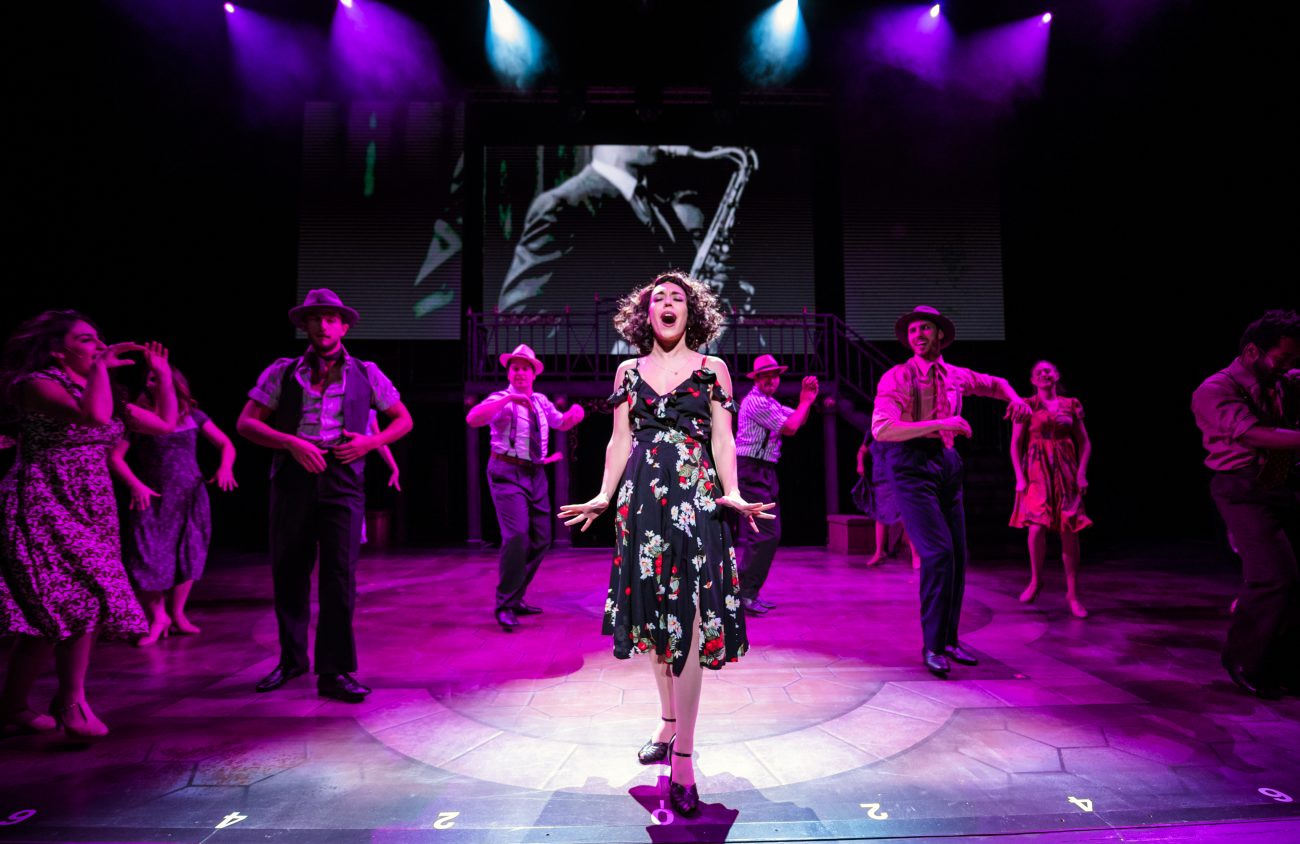I wanted to love the Theatre League’s Evita, but it is not where it should be.
Evita, which played Feb. 16-17 at the Hult Center, features music by Andrew Lloyd Webber and lyrics and book by Tim Rice. The show follows the life of Argentinian actress and political leader Eva “Evita” Perón, wife of “president” Juan Perón.
Opening at the news of Evita’s early death, the story takes us on a journey from her teenage years to making it big to falling in love and dying a painful and untimely death. Somehow it works!
The male performances showed brighter in the recent production at the Hult Center. Matthew Malecki Martinez as Magaldi croons beautifully through “Eva Beware of the City” and other guitar-driven cautionary tales. And Gary Bartón, as smooth operator/vicious dictator Juan Perón, seduces a flirty would-be First Lady with his honey-tenor “I’d Be Surprisingly Good for You.”
On balance, the underdeveloped relationship between Evita and Che, played to stentorian rock-ballad heights by Lance Galgon, gives us little of the sexy dynamic that could and should percolate between this Cuban revolutionary and little Eva. (That Tim Rice and Andrew Lloyd Weber stuffed a Cuban revolutionary into this story about the post-war Argentinian ruling elite should be demonstration to anyone that these nutty theater-makers are pretty much geniuses and deserving of a permanent candle lit in the Church of High Camp.
Che has some great songs, from the sardonic “Goodnight and Thank You” to the lilting “High Flying, Adored” to the badass “And the Money Kept Rolling In” — each number demanding a range of emotional pulses. And though Galgon can carry a tune, his Che can’t carry the story.
Che is supposed to be our narrator. We could not understand his words.
But we need to talk about Evita.
Oh, Evita.
The titular role falls on the bedazzled shoulders of Yael Reich. Reich is game and energetic, and not lacking in enthusiasm. But she is a true soprano trapped in a mezzo role. She becomes shrill and sharp in the high end, relying on mixed voice — a full but tinny belt, as if she’s afraid to use her gut — and she just doesn’t have command in her lower range.
But some of the most powerful notes in the show are the low ones. Evita doesn’t spend a lot of energy up in the stratosphere, and we fall in love with her (or we’re supposed to) when she reveals herself through her deeper register. Reich lacks the necessary oomph to carry the part; case in point, her “Don’t Cry for Me Argentina” was utterly underwhelming.
Another lead that struggled is Madeline Ellingson as the Mistress. “Another Suitcase in Another Hall” should be a heartfelt expression of loss on multiple levels, but Ellingson’s tense acting and sharp vocals punctured that potential throughout.
Listen: We need intonation. We need interpretation. It’s not enough to sing the notes. Performers have to be able to act them. While also dancing. That’s what a musical is.
Music by Andrew Lloyd Webber should be a ringer. But what is there to recommend the canned orchestration by Lloyd Cooper? I know it’s done more and more often, but a musical divorced from live music is just such a joyless experience.
Bruce Brockman’s bi-level set worked best when paired with projections creating the illusion of architecture, a movie theatre, a church, etc. But often, Brockman’s set seemed static and one-dimensional.
Video design by Mark Ciglar lent an overall Google images/Wikipedia effect. In most instances, the physical separation between the projected imagery and the action onstage forced the viewer to choose where to focus.
Sometimes images were documentary photographs, sometimes animation — we were actually in the clouds when we were “High Flying, Adored” — often paced with such frequency that the imagery created a visual overload.
The song and dance numbers, directed and staged by Andy Ferrara with choreography by Cheryl Baxter-Ratliff, feel like they need more rehearsal. It’s not the dancers. The dancers are fine; they’re doing movement, and seem relatively prepared.
But the dance — le sigh. Considering what choreography for musicals has developed into, this production’s stale choreography did little to elevate the art form. Cruise ship comes to mind.
Lighting design by Chad Bonaker featured oddly numerous blackouts between scenes, draining even the most rousing numbers with dark, confusing breaks, leaving audiences unsure about whether to clap.
Because we want to clap. We want to enjoy ourselves.
The strongest moment in this Evita comes during the second act, when the ensemble lifts their voices in “Santa Evita.” Holy smokes — the chorus can sing. We hear them, each clear as a bell, sweet and resonant. But casting choices in this one put the wrong performers in the spotlight.
The critics uniformly panned Evita when it appeared 40 years ago — though audiences were there for Harold Prince’s directing, Mandy Patinkin’s white heat and Patti LuPone’s winking rawness. Those two kids made this show, and this show made their careers.
But this production is a far cry from Broadway legend.
At least Andrew Lloyd Weber and Tim Rice will still get their royalty checks.
